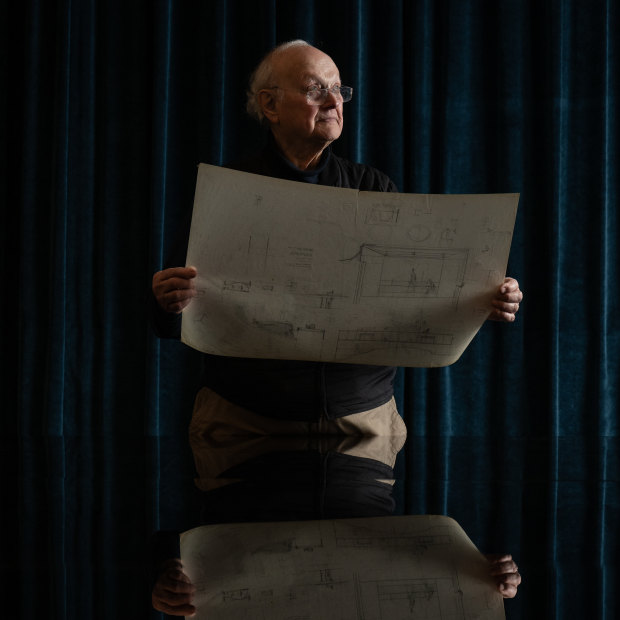
Architect Glenn Murcutt has a new book coming out about his unbuilt works.Credit: Louie Douvis
Never-built and never-before-seen designs by Australia’s most celebrated architect, Glenn Murcutt, have been brought to life in a new book using CGI technology.
The architectural renders of 10 unbuilt projects, which include a 1969 Seaforth home for his mother crafted around a giant rock, were realistic enough to fool Murcutt’s oldest friend, well-known Finnish architect Juhani Pallasmaa, a critic of “fake” digital renders. “He thought they were real … and extraordinary,” Murcutt said.
Glenn Murcutt: Unbuilt Works, by Nick Sissons, will be launched at the State Library of NSW on Thursday, Murcutt’s 88th birthday.
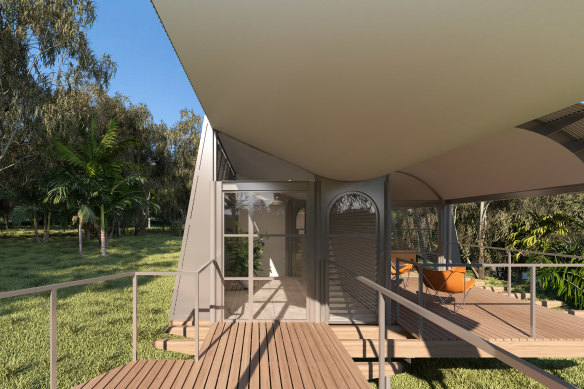
A one-bedroom, elevated house in Woodburn near Burrill Lake on NSW’s South Coast designed by Glenn Murcutt in 1987. Never built because one of the owners died, the house has strong similarities with Magney House, built in 1983, and one of the projects cited when the Australian architect won the Pritzker Prize for architecture. Credit: Nick Sissons
Murcutt told NSW State Librarian Dr Caroline Butler-Bowdon this week that the library holds “every drawing he [has] ever done”, and he often returns to look at designs contained in its archive of 100,000 drawings and plans going back to the 1960s.
The library elicits joy and grief from Murcutt. The book is dedicated to his late sons: Daniel, a much-loved employee of the library for decades until his death aged 57 last December, and Nick, an architect who died at 46 in 2011.
“Losing my two boys has been the worst thing that has happened to me by far,” Murcutt said.
“I’ve been very lucky and blessed with good health. I’ve had the highest of highs and the lowest of lows,” he said, his arm pointing up and swooping down. “The highs have been extraordinary.”
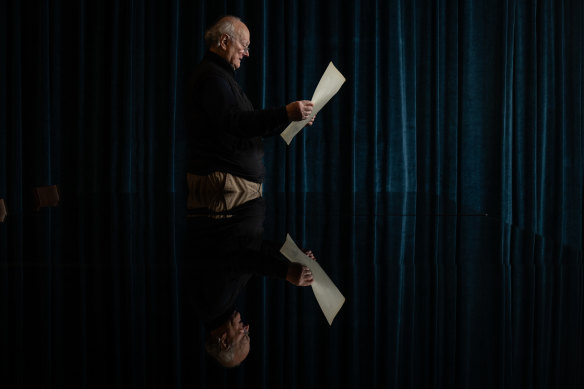
Glenn Murcutt at the State Library of NSW, which holds an archive of his images and drawings. A book by Nick Sissons on Murcutt’s unbuilt works will be launched at the library on Thursday.Credit: Louie Douvis
Murcutt said he never expected to be honoured with so many global architecture awards: the Alvar Aalto Medal in 1992, the Pritzker Prize in 2002, the American Institute of Architects Gold Medal in 2009, and the Japanese award for the arts, Praemium Imperiale, in 2021.
“But when they came, I was very excited, it was wonderful.”
To bring the 10 unbuilt works to life, Sissons said he dug like an archaeologist into the library’s architectural archives. He traced how the unbuilt projects foreshadowed future designs, leading to projects like Magney House at Bingie Point, on the NSW South Coast. It was cited by judges when Murcutt became the only Australian architect to win the Pritzker.
“His is an architecture of place, architecture that responds to the landscape and to the climate,” the Pritzker judges said.
Some people who saw the renders – created through computer modelling by Ria Chaney with CGI imagery by David Duloy – thought they looked so real they must have been built, while others asked if Murcutt could build the same designs for them.
“There’s no way, because they were designed for that specific place,” Sissons said. “You couldn’t possibly just build them somewhere [else].”
The unbuilt home for his mother had been designed around a giant rock, another was elevated to keep it clear of the water table, another to minimise the bushfire risk, and others to take advantage of the northern light.
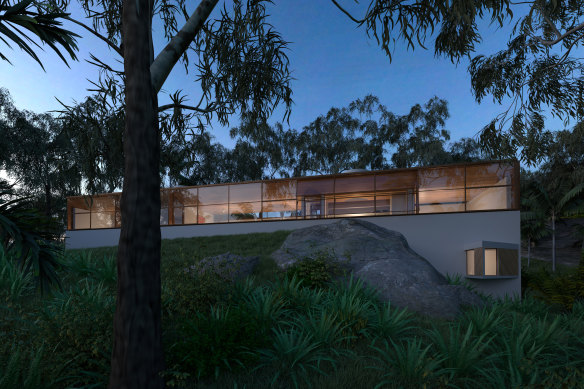
The render of a four-bedroom house in Seaforth designed by Glenn Murcutt in 1969 for his mother which was designed around a large rock. Credit: Nick Sissons
Going through the drawings, Sissons said he could sometimes see ideas emerging over several sketches. Other ideas were abandoned or reappeared later.
“Never be afraid of losing a good idea,” said Murcutt, adding it had been a joy to see the drawings brought to life.
“I was very excited seeing the actual thing come into, what appeared to be, reality. But I didn’t get any shocks. I didn’t get any big, huge surprises.”
Murcutt said he had always been able to see the three-dimensional design in his head, thanks to being taught to draw by hand, without the computers used by today’s architects.
His drawings were accurate within millimetres of the real thing, Murcutt said, so there were no surprises. “When the thing is built, that’s basically it,” he said.
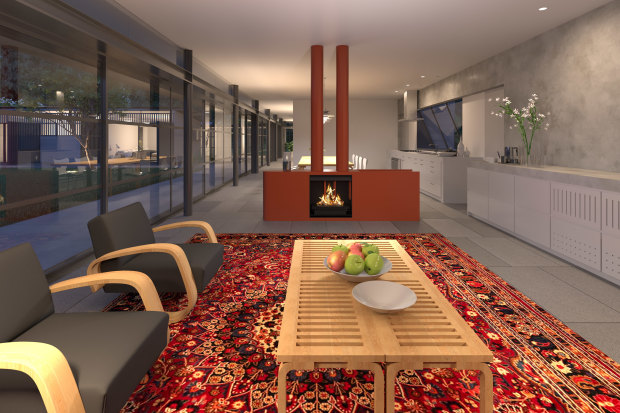
A 2002 home designed by Glenn Murcutt at Foxground near Kangaroo Valley that was never built. An L-shape, Murcutt said it allowed him to orient the daytime living areas to the north, and the sleeping areas east-west. Credit: Nick Sissons
Sissons was a 19-year-old student when he first heard Murcutt speak.
“For the first time, I actually understood what architecture was. It wasn’t about -isms or style design or wearing black or going to the right kind of galleries. It was actually the process of designing and procuring buildings,” he recalled.
Laura Harding, an architect with Hill Thalis, said Murcutt asked his students about the “-ings of things”. They were encouraged to imagine what it would be like to be sleeping, eating, reading or working in the home they were designing.
Butler-Bowdon said Murcutt was one of the real greats of his profession. “We are deeply honoured to hold his extensive collection.”
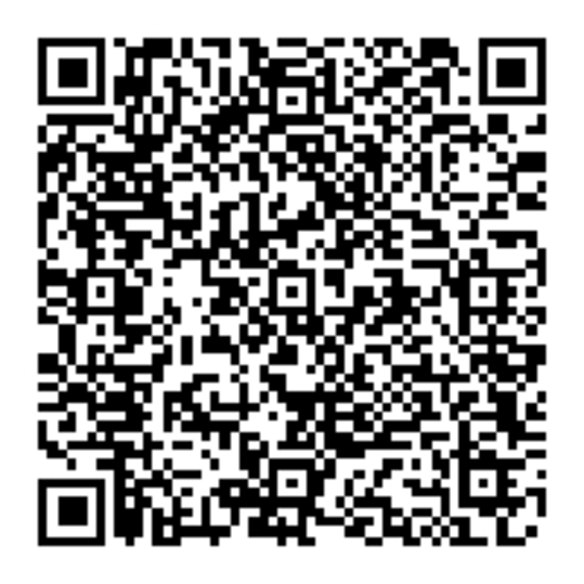
Use the QR code to take a look inside the design by architect Glenn Murcutt for a new house in Seaforth for his mother Daphne in 1969.Credit: Computer modelling by Ria Chaney with CGI imagery by David Duloy
Start the day with a summary of the day’s most important and interesting stories, analysis and insights. Sign up for our Morning Edition newsletter.